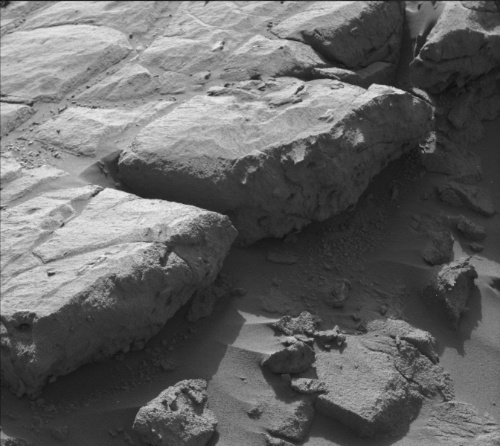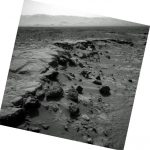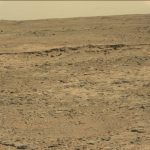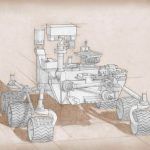17th Dec. 2013 Sol 485
The landing site slection process for the 2018 ExoMars Rover has just started: http://exploration.esa.int/mars/53462-call-for-exomars-2018-landing-site-selection/ I am one of the people on a European Space Agency led group who will scrutinise the sites for their suitability for ExoMars. Other people from the MSL team are also on this group and we will use the experience we […]
9th Dec. 2013 Sol 478
Today is when the first set of papers about Yellowknife Bay are published. There are six, and they are about the sediments, minerals, the age of the sediments, the geochemistry and the radiation environment. I am a co-author on the geochemistry paper and my collaborator Dr Susanne Schwenzer is a co-author on the radiometric dating […]
5th December 2013 Sol 474
We have paused to do some contact science, using the robotic arm to use APXS on the local rocks. The traverse map shows our path since landing, into and then out of Yellowknife Bay, and then across the cratered plain towards the sand dunes which mark the boundary of Mt. Sharp. On some sols we […]
26th November 2013 Sol 466
Two years after launch from Cape Canaveral we have been slowed up temporarily by a minor short circuit, but are now getting back to analyses and driving. Every 26 months Mars and Earth are relatively close e.g. 55 million km (!), and so a Hohman transfer orbit can take place. Thus it is no coincidence that MAVEN has […]
19th November 2013 Sol 459
As we work in Gale Crater with Curiosity, other Mars missions are being planned and launched. MAVEN (Mars Atmosphere and Volatile Evolution) has taken off to orbit Mars and study in its thin upper atmosphere. When the mudstones at Yellowknife Bay formed the atmosphere was probably considerably thicker than it is today. By calculating the […]
13th November 2013 Sol 453
We have restarted science operations again after the software upload taking longer than expected. This image taken with one of the Hazard cameras at the front of Curiosity shows the robotic arm taking analyses of the coarse sediment at Cooperstown.

6th November 2013 Sol 445
Curiosity is having a software upgrade this week, so no science operations. We are still at Cooperstown and thinking about the close up images of the outcrop layers. Different clasts from anything we have seen before, as they are more angular than the conglomerates near our landing site.

1st November 2013 Sol 439
We have driven right up to the Cooperstown outcrop. The rdige (a few tens of cm high) is composed of a resistant layer of sedimentary rock. This is the most extensive and detailed sedimentary outcrop since we left Yellowknife Bay. Its also a fantastic view of the crater rim, a bit dusty but you can see […]

30th October 2013 Sol 438
We have now reached Waypoint 2 – Cooperstown, 4 km from our starting point at Bradbury Landing. Our aim will be to do contact science, over the next few sols, with the robotoc arm, probably on the outcrop of flat-lying sedimentary rock you can see in this image. We will want to compare the results […]

28th October 2013 Sol 436
Today is a soliday on Mars and no science activities. We are parked close to our next Waypoint called Cooperstown. We will be getting full resolution MastCam images over the next few days of a large outcrop that we are aiming for. Meanwhile there is a public NASA-hosted conference about the next Curiosity-class rover – called Mars2020 […]

 Subscribe to jbridges's posts
Subscribe to jbridges's posts
Recent Comments